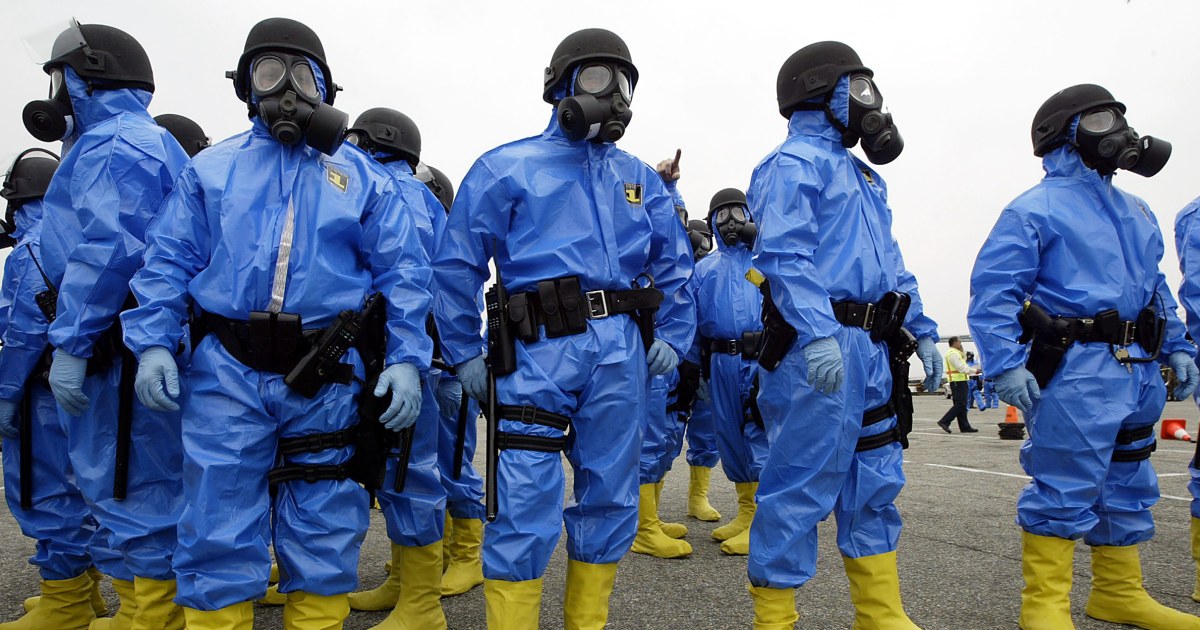
www.nbcnews.com
What is a 'dirty bomb'? Explaining the device that Putin is using to escalate war tensions
As tensions over the war in Ukraine worsen, NBC News looks at what a dirty bomb is, the damage it can cause and whether it can render any military advantage.
International
U.S. and Ukrainian alarm over a flurry of Russian claims that Kyiv plans to deploy a so-called dirty bomb have worsened fears that President Vladimir Putin could try to escalate the conflict to try to change the course of the war.
Ukraine and its allies vehemently reject the Russian accusations, countering that, in fact, the Kremlin may be planning a “false flag” operation, blaming Kyiv for its own actions.
As tensions over the nine-month war worsen, NBC News looks at what a dirty bomb actually is, the damage it can cause and whether it can render any military advantage.
What is a dirty bomb?
A dirty bomb, also known as a “radiological dispersion device,” is defined as a conventional weapon that has been augmented with a radioactive material. Traditionally, security experts have warned of dirty bombs’ being used by terrorist groups instead of militaries.
The method of delivery could be a missile, an airplane stocked with radioactive materials or a strategically planted improvised explosive device, according to the Washington-based Center for Arms Control and Non-Proliferation.
It’s a basic, rudimentary device that’s easy enough to make with explosives and radioactive material, said nuclear expert Tom Plant, a senior associate fellow at the Royal United Services Institute, a defense and security think tank in London.
A variety of radioactive materials could be used, he said, including materials used in nuclear medicine and for industrial purposes. When it’s deployed, the material doesn’t do anything to make the explosion any bigger, he said — it’s there purely to create contamination and, most likely, panic.
What damage can it cause?
Just how devastating a dirty bomb can be depends on the type and size of the conventional explosives, as well as the potency and amount of radioactive material that has been added.
The main danger comes from the explosion, not the radiation, according to the guidance on radiological dispersion devices from the Centers for Disease Control and Prevention.
“Only people who are very close to the blast site would be exposed to enough radiation to cause immediate serious illness,” according to the guidance. “Still, radioactive dust and smoke can spread farther away and could be dangerous to health if people breathe in the dust, eat contaminated food or drink contaminated water.”
Pavel Podvig, a senior researcher at the U.N. Institute for Disarmament Research, said on Twitter that a “dirty bomb” contamination area is likely to be no more than a few hundred yards in diameter.
“To create serious contamination over a large area one would have to blow up a nuclear reactor, Chernobyl-type,” Podvig said.
Plant said the psychological damage from deploying a dirty bomb in Ukraine would probably be far-reaching.
“The fact that it’s dirty — in that the contamination spreads around — is the kind of thing that people get scared of,” he said.
It could also overwhelm hospitals as people rush to get assessed for radioactive poisoning even if they aren’t sick, and it could cause widespread disruption as authorities undertake a potentially extensive clean-up, Plant said.
























































